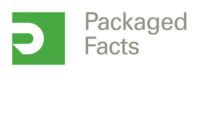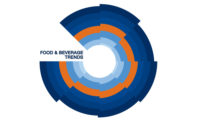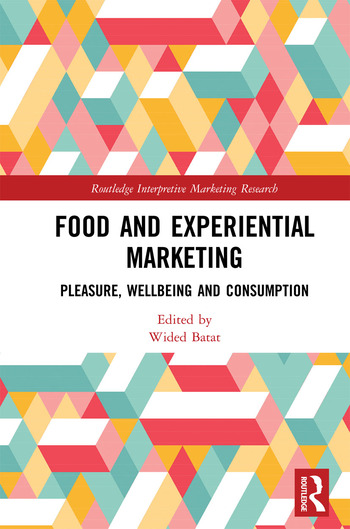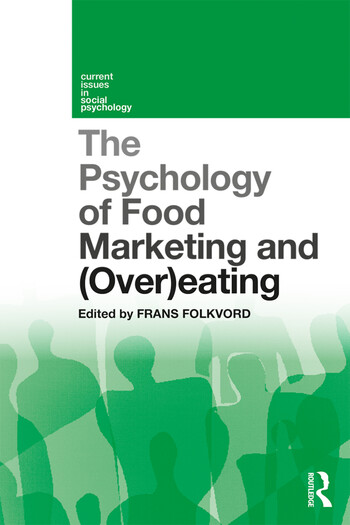Stressed Americans Drive Salty Snack Market
Three in five consumers are eating salty snacks as a stress reliever
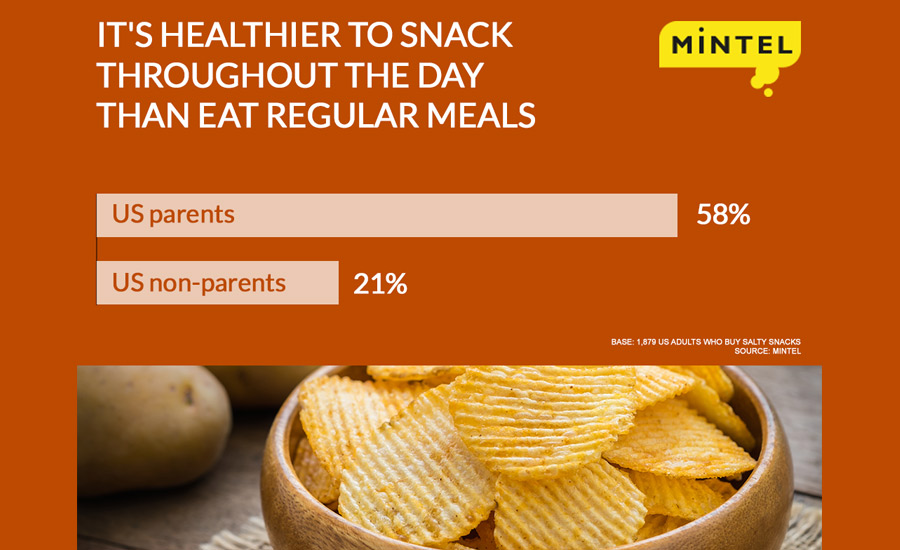
As the popularity of snacking continues to climb, salty snacks are becoming the new comfort food for US consumers. The latest research from Mintel reveals that three in five (62%) consumers are eating salty snacks as a stress reliever, compared to 16% of American snackers who attributed stress as a reason for snacking one year ago. What’s more, 30% of consumers eat salty snacks when they are bored, with half (51%) agreeing that salty snacking is a good way to relieve boredom. In 2015, Mintel research found that half as many consumers (25%) snacked because they were bored.
The portability of salty snacks allows consumers to alleviate their stress on the go, with one third (33%) of salty snackers eating them away from home and 26% eating them at work. Parents are among America’s most prevalent salty snackers and are increasingly likely to snack on salty options while on the go (41%), at work (36%) and throughout the day (34%). What’s more, US parents are more likely than non-parents to agree that snacking is a stress reliever (73% vs 55% of non-parents). Mintel research reveals that one third (35%) of parents are indulging in the same salty snacks as their children. Moreover, parents (58%) are significantly more likely to agree that it’s healthier to snack throughout the day than eat regular meals (compared to 21% of non-parents).
“Consumption of salty snacks is largely driven by emotion, including stress and boredom. Consumers are looking for ways to manage their wellbeing, and the impact of food on emotional and mental health is becoming more important. Our research reveals this is especially true among parents, with the majority agreeing that salty snacks relieve stress,” said Amanda Topper, Senior Food Analyst at Mintel. “Not only do parents’ hectic lifestyles force them to snack while on the go, but the majority who buy salty snacks agree that snacking throughout the day is a healthy alternative to regular meals. Brands that highlight health and wellness benefits can appeal to parents that are often buying snacks that can be consumed by themselves and their children.”
With 94% of Americans purchasing salty snacks and 13% replacing meals with them, Mintel research reveals that three quarters (74%) of consumers are interested in healthier salty snacking options. Along these lines, another three in five (61%) agree that salty snacks have too many artificial ingredients, while four in five (79%) find it important to be able to recognize the ingredients in salty snacks. What’s more, 58% of salty snack purchasers agree that it is important to buy salty snacks that contain only a few ingredients.
Despite interest in healthier options, taste trumps all when choosing salty snacks: three in five (62%) consumers agree that taste is more important than how healthy a salty snack is. In fact, a new flavor (38%) is the most influential purchasing factor for American salty snackers, along with spicy flavor (30%) and limited-edition/seasonal flavor (22%). Taste remains a key purchase factor as consumers tend to view snacking as a guilty pleasure (69%) and indulge in salty snacking as a way to reward themselves (63%).
However, taste and health are not polarizing Americans, as four in five (82%) consumers agree that salty snacks can be both healthy and tasty.
“Striking a balance between good tasting and good for you is key for salty snack brands. While consumers are concerned about ingredients and express interest in seeing healthier options on shelves, they still want to indulge, and flavor is a highly motivating factor. Brands that focus on products with bold, new flavors that incorporate simple ingredients will offer the best of both worlds to consumers,” continued Topper.
With consumers looking to balance simplicity and indulgence, meat snacks are driving the salty snacks category, comprising 30% of retail sales. From 2010-15, sales of meat snacks grew faster than any other segment (55%), benefiting from consumers who are looking for fewer ingredients and healthy options. Mintel research indicates that consumers are more likely to look for no artificial ingredients (22%), organic (17%) and high protein (33%) claims on meat snacks than any other salty snack.
Overall, the salty snacks category grew 29% from 2010-15, reaching $10.2 billion, with sales projected to climb an additional 22% to $12.4 billion in 2020.
“Recent innovations in flavor and format have helped to spur sales of meat snacks, which are largely perceived as a natural snack food with clean ingredients. Future growth of the burgeoning meat snacks segment, and the salty snacks category overall, will hinge on brands continuing to identify and adapt to consumers’ better-for-you interests and remain transparent in the ingredients they are adding and removing from snacks,” concluded Topper.
The portability of salty snacks allows consumers to alleviate their stress on the go, with one third (33%) of salty snackers eating them away from home and 26% eating them at work. Parents are among America’s most prevalent salty snackers and are increasingly likely to snack on salty options while on the go (41%), at work (36%) and throughout the day (34%). What’s more, US parents are more likely than non-parents to agree that snacking is a stress reliever (73% vs 55% of non-parents). Mintel research reveals that one third (35%) of parents are indulging in the same salty snacks as their children. Moreover, parents (58%) are significantly more likely to agree that it’s healthier to snack throughout the day than eat regular meals (compared to 21% of non-parents).
“Consumption of salty snacks is largely driven by emotion, including stress and boredom. Consumers are looking for ways to manage their wellbeing, and the impact of food on emotional and mental health is becoming more important. Our research reveals this is especially true among parents, with the majority agreeing that salty snacks relieve stress,” said Amanda Topper, Senior Food Analyst at Mintel. “Not only do parents’ hectic lifestyles force them to snack while on the go, but the majority who buy salty snacks agree that snacking throughout the day is a healthy alternative to regular meals. Brands that highlight health and wellness benefits can appeal to parents that are often buying snacks that can be consumed by themselves and their children.”
With 94% of Americans purchasing salty snacks and 13% replacing meals with them, Mintel research reveals that three quarters (74%) of consumers are interested in healthier salty snacking options. Along these lines, another three in five (61%) agree that salty snacks have too many artificial ingredients, while four in five (79%) find it important to be able to recognize the ingredients in salty snacks. What’s more, 58% of salty snack purchasers agree that it is important to buy salty snacks that contain only a few ingredients.
Despite interest in healthier options, taste trumps all when choosing salty snacks: three in five (62%) consumers agree that taste is more important than how healthy a salty snack is. In fact, a new flavor (38%) is the most influential purchasing factor for American salty snackers, along with spicy flavor (30%) and limited-edition/seasonal flavor (22%). Taste remains a key purchase factor as consumers tend to view snacking as a guilty pleasure (69%) and indulge in salty snacking as a way to reward themselves (63%).
However, taste and health are not polarizing Americans, as four in five (82%) consumers agree that salty snacks can be both healthy and tasty.
“Striking a balance between good tasting and good for you is key for salty snack brands. While consumers are concerned about ingredients and express interest in seeing healthier options on shelves, they still want to indulge, and flavor is a highly motivating factor. Brands that focus on products with bold, new flavors that incorporate simple ingredients will offer the best of both worlds to consumers,” continued Topper.
With consumers looking to balance simplicity and indulgence, meat snacks are driving the salty snacks category, comprising 30% of retail sales. From 2010-15, sales of meat snacks grew faster than any other segment (55%), benefiting from consumers who are looking for fewer ingredients and healthy options. Mintel research indicates that consumers are more likely to look for no artificial ingredients (22%), organic (17%) and high protein (33%) claims on meat snacks than any other salty snack.
Overall, the salty snacks category grew 29% from 2010-15, reaching $10.2 billion, with sales projected to climb an additional 22% to $12.4 billion in 2020.
“Recent innovations in flavor and format have helped to spur sales of meat snacks, which are largely perceived as a natural snack food with clean ingredients. Future growth of the burgeoning meat snacks segment, and the salty snacks category overall, will hinge on brands continuing to identify and adapt to consumers’ better-for-you interests and remain transparent in the ingredients they are adding and removing from snacks,” concluded Topper.
Looking for a reprint of this article?
From high-res PDFs to custom plaques, order your copy today!





